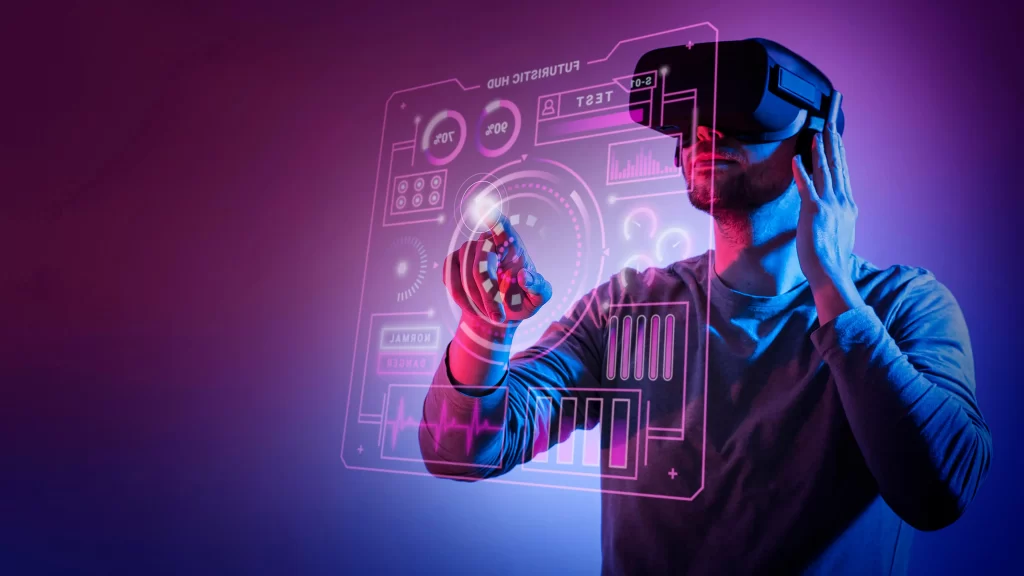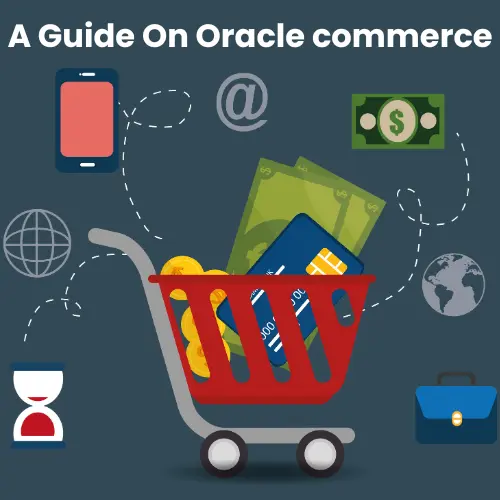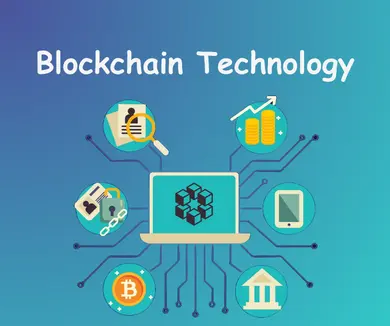Introduction
E-commerce has come a long way since its inception in the late 20th century. It has evolved from simple online storefronts to complex, global marketplaces that generate trillions of dollars in revenue. In recent years, two technologies, in particular, have been making waves in the e-commerce world: blockchain and virtual reality (VR). In this blog, we’ll delve into the profound impact that blockchain and virtual reality are having on the future of e-commerce.
Understanding Blockchain

Blockchain is a decentralized and distributed ledger technology that is associated with cryptocurrencies like Bitcoin. However, its application extends far beyond digital currencies. Blockchain is essentially a digital ledger that records transactions across multiple computers. These transactions are grouped into “blocks” and linked together in a chronological chain, thus creating a secure and tamper-resistant record.
Impact of Blockchain on E-Commerce
Enhanced Security: One of the major benefits of blockchain in e-commerce is its ability to enhance security. Transactions made on a blockchain network are cryptographically secure, reducing the risk of data breaches and fraud. This can lead to greater trust between buyers and sellers.
Transparency and Trust: One of the key advantages of blockchain for e-commerce is the transparency it offers. Each transaction in the chain is visible to all parties involved, reducing the risk of fraud. This increased transparency can improve trust between buyers and sellers in the e-commerce marketplace, making it more attractive to consumers.
Smart Contacts: Smart contracts, self-executing contracts with the terms of the agreement directly written into code, can automate various aspects of e-commerce, such as payment processing and order fulfillment. This reduces the need for intermediaries, ultimately cutting costs.
Global Payments: Blockchain facilitates cross-border transactions without the need for currency conversions, making international e-commerce more efficient and cost-effective.
Supply Chain Management: Blockchain is transforming supply chain management in e-commerce. With a transparent ledger, businesses can track the movement of goods at every stage of the supply chain. This enhances traceability, reduces counterfeiting, and improves overall efficiency.
Reduced Fraud: Chargebacks and payment disputes are a common issue in e-commerce. Blockchain’s irreversible transactions can significantly reduce the occurrence of fraudulent chargebacks, saving both businesses and customers money.
Understanding Virtual Reality (VR)

Virtual Reality is an immersive technology that creates a simulated environment, allowing users to interact with a digital world through a headset or other devices. VR has applications in various fields, including gaming, education, and healthcare.
Impact of VR in E-Commerce
Enhanced Shopping Experiences: VR can provide customers with a more immersive and interactive shopping experience. Users can virtually “try on” products, inspect them from all angles, and get a realistic sense of the item before making a purchase. This can reduce the rate of product returns.
Reducing Product Returns: VR also can reduce product returns, a significant concern in e-commerce. With VR, customers can see how a product fits or looks in their living space before purchasing it. This mitigates the disappointment that can lead to returns, benefiting both customers and retailers.
Virtual Storefronts: Retailers can create virtual storefronts where customers can browse products in a 3D environment. This can be especially beneficial for industries like real estate or interior design, where the physical space is essential.
Personalized Shopping: VR can collect data on user preferences and behaviors, allowing e-commerce platforms to offer highly personalized recommendations and advertisements within the virtual environment.
Collaborative Shopping: VR can enable friends or family in different locations to shop together in a virtual space, creating a social shopping experience that mimics physical shopping trips.
Showcasing Products: Businesses can use VR to showcase their products or services more effectively. For instance, a hotel could provide virtual tours to potential guests, allowing them to explore the property before booking.
Virtual Shopping Malls: Retailers are exploring virtual shopping malls where users can navigate through different stores just as they would in a physical mall. These virtual malls can be accessed from anywhere, eliminating geographical constraints and offering shoppers a wider array of choices.
The Synergy of Blockchain and VR in E-Commerce
Decentralized Marketplaces: The fusion of blockchain and VR in e-commerce could create decentralized marketplaces where users can shop securely in immersive virtual environments, using cryptocurrencies. These marketplaces provide transparency and trust through blockchain technology while providing an immersive VR experience.
Intellectual Property Protection: Blockchain can be used to record ownership and copyrights for digital assets, and VR can offer users a unique and interactive way to experience these assets. For example, artists can sell virtual art in VR galleries, protected by blockchain-based ownership records.
Secure Payments: Blockchain technology can ensure secure and fraud-resistant payments within VR e-commerce. Users can make payments using cryptocurrencies, and smart contracts can be utilized to automatically release payment upon successful delivery or satisfaction of agreed-upon conditions.
Challenges and Considerations
While the future of e-commerce with blockchain and VR looks promising, there are several challenges and considerations:
Technology Adoption: Widespread adoption of blockchain and VR technology in e-commerce is still in progress. Not all businesses have the resources or infrastructure to seamlessly integrate these technologies into their operations.
According to a Gartner survey in 2022, only 10% of organizations had adopted blockchain technology, citing various reasons including a lack of understanding, regulatory concerns, and the cost of implementation. Additionally, the adoption of VR in e-commerce is growing, but it is not yet a mainstream practice.
Costs: Developing VR experiences and implementing blockchain systems can be expensive. Small and medium-sized e-commerce businesses may struggle to allocate the necessary resources for these technologies.
The development cost of a VR application varies widely depending on complexity but can range from tens of thousands to millions of dollars. Implementing blockchain solutions can also be costly. According to Deloitte, the initial costs of implementing a blockchain solution can range from $100,000 to $300,000.
Privacy Concerns: VR shopping may raise concerns about data privacy. As users navigate virtual stores, their behavior and preferences are tracked, potentially leading to privacy violations.
According to a Pew Research Center survey, 81% of Americans feel they have very little or no control over the data that is collected about them, and 79% are not confident that companies will keep their data safe. These concerns can be amplified in the context of VR e-commerce.
Regulatory Environment: The legal and regulatory framework for blockchain and VR in e-commerce is still evolving, and compliance requirements can vary widely by region and jurisdiction.
A survey by PwC found that 84% of executives consider the lack of regulatory clarity a significant barrier to the adoption of blockchain technology. Additionally, the regulatory landscape for VR in e-commerce is complex, as it often involves issues related to data protection, consumer rights, and intellectual property.
User Experience: While VR can enhance user experiences, poorly designed VR applications can lead to motion sickness and other discomforts, which can put users off.
According to a study published in the International Journal of Human-Computer Interaction, 56% of participants reported experiencing some level of motion sickness when using VR. E-commerce companies need to address these challenges to provide a comfortable and enjoyable shopping experience.
Security and Trust: Ensuring the security and trustworthiness of blockchain and VR applications is essential, as they handle sensitive financial and personal data.
According to a survey conducted by PwC, 45% of respondents identified security and privacy concerns as one of the biggest barriers to blockchain adoption. Ensuring the integrity and security of VR environments in e-commerce is equally crucial.
Limited User Base: Not all consumers have access to VR equipment, which limits the potential customer base for VR-enabled e-commerce platforms.
Statista reports that as of 2022, there were approximately 21 million VR headsets in use worldwide. While this is a significant number, it still represents a fraction of the global consumer base.
Interoperability: Integrating blockchain and VR systems can be challenging, as these technologies may not always be compatible with existing e-commerce infrastructure.
A study by Gartner estimated that by 2023, 90% of blockchain projects would require replacement within 18 months due to a lack of interoperability. Ensuring smooth integration with e-commerce platforms is essential for the success of these technologies.
Conclusion
The impact of blockchain and virtual reality on the future of e-commerce is transformative. These technologies are redefining the way online shopping is done, improving transparency, trust, and customer experience. The synergy of blockchain and virtual reality opens up new possibilities for decentralized markets, intellectual property protection, and secure payments. As technology continues to evolve, e-commerce will become more immersive, efficient, and customer-centric than ever before, giving us a glimpse into a future where online shopping will be virtually indistinguishable from the real-world experience.



